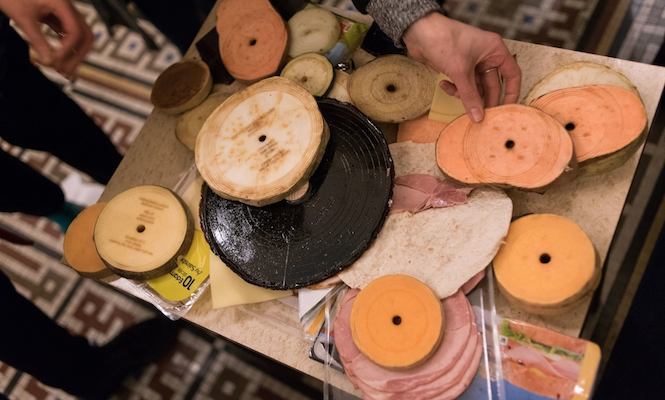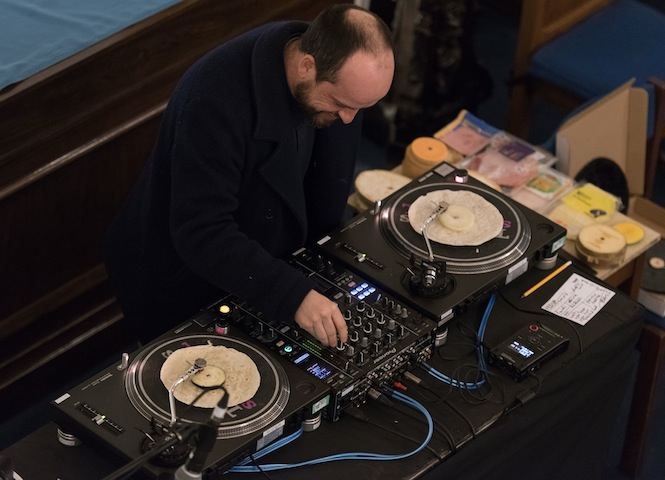We had a small celebratory viewing yesterday, and a lot of people got a kick out of my computer… And yes, it works lol
Posted by Andrew Salgado on Sonntag, 17. April 2016
(via this isn’t happiness)
6 KommentareWe had a small celebratory viewing yesterday, and a lot of people got a kick out of my computer… And yes, it works lol
Posted by Andrew Salgado on Sonntag, 17. April 2016
(via this isn’t happiness)
6 KommentareAls einst mal gelernter Maler/Lackierer habe ich ein echtes Faible für Farbpigmente. Nicht unbedingt für die, die sie sich auf den Holi-Festen in die Gesichter klatschen, aber auch. Ein bisschen. Aber: es ist toll, eine Farbe in seiner Gesamtheit aus allen Rohstoffen inklusive ihrer Pigmente zu mischen. Es hat etwas sehr traditionelles. Und überhaupt kann man mit Farbpigmenten wundervolle Sachen machen.
Das Harvard Art Museums in Cambridge sammelt seit einiger Zeit Farbpigmente. In all ihren Farben. Auch die ganz raren. Great Big Story war da und hat sich die Sammlung genauer angesehen. So schön bunt.
The materials collection, at the Harvard Art Museums in Cambridge, MA, houses thousands of pigments, including some of the world’s rarest. Dragon’s blood, mummy, Indian yellow: these are but a few flashy highlights from the museum’s collection.
(Direktlink, via Colossal)
John Peña, Künstler aus Pittsburgh, hat im Jahr 2003 damit begonnen, täglich einen Brief an den pazifischen Ozean zu schreiben. Da dieser bekanntlich Briefe nicht annehmen und schon gar nicht lesen kann, kam ein Großteil der Briefe natürlich zurück. Gesammelt an einer Wand sehen die durchaus beeindruckend aus.
In 2003, Pittsburg-based artist John Peña sent a letter addressed to the Pacific Ocean. He has continued doing this daily act for the past 13 years, amassing over 3,000 letters that have been returned to him with the US Postal Service stamp saying “no such place exists.”
Einige der Rücksendungen waren mit handschriftlichen Notizen versehen. So wie dieser hier. Das macht jedoch nichts – Peña schickt nach wie vor täglich einen Brief an den Ozean.
(via this isn’t happiness)
Ein KommentarWHAT A TIME TO BE ALIVE pic.twitter.com/7dU34PnF0C
— Ross Ingram (@RossIngram) March 21, 2016
Vor ein paar Wochen hatte ich hier Matthew Herberts Tortilla-Schallplatte, die er für seine edible Sounds-Serie hat mit einem Laser schneiden lassen. Vorgestern hat er nun ein ganzes Set mit Lebensmittelschallplatten gespielt. Schinken, Käse, Aubergine, Sellerie, brauner Zucker, alles dabei. Bisher allerdings habe ich keine Tonaufnahmen davon finden können, was vielleicht auch Gründe hat.
Herbert was commissioned by Science Gallery London for FED UP: The Future of Food to get to the root of contemporary issues around food production, nutrition and waste.
Equipped with a larder of ingredients used in processed foods, he laser-etched aubergine, onion, celeriac, potato, ham, cheese, tortilla and sugar into playable, edible records which were then fed to the audience at the end of the performance.


next edible sound for tonight's show, a record made of brown sugar pic.twitter.com/UmSE6MrwVG
— matthew herbert (@matthewherbert) March 16, 2016
(via René)
Ein KommentarSehr schön anzuschauende Visualisierung vom Studio Roosegaarde, das dafür Windräder mit Lasern verbindet.
Windlicht is the latest artwork by Roosegaarde which shows the beauty of green energy by connecting windmill blades with lines of light. Special software and tracking technology detect the windmill blades rotating at 280 kilometres per hour. Visitors can tune into radio canal WINDLICHT FM 105.3 FM to hear the stories behind the artwork.
(Direktlink, via René)
Essen als Deko-Element, um damit im Schaufenster zu werben, scheint in Japan verbreiteter zu sein, als beispielsweise hierzulande. So gibt es Firmen, die sich dort auf das Herstellen von Fake Food spezialisiert haben. Sieht alles zum Anbeißen lecker aus.
In Japan, it’s customary for restaurants to display their offerings inside their front windows. Think restaurant window shopping. The displays come from one city only: Gujo. This ancient town is the epicenter of artificial food. The people who make the displays are real artists, but the „food“ they create is not.
(Direktlink, via Core 77)

Alles eine Frage der Zeit. Irgendwann sind sie weg. Die Holzstuhl-Schleifmaschine des niederländische Künstlers Leon de Bruijne, die er Quick Sand nennt. Ein bisschen so wie das Leben.
If you want to open a can of soup without using a can-opener you can by grinding the top over the asphalt until enough material is worn away to open it. Erosion is an interesting process. Rubbing one material to another always leads to one of them disappearing to dust. A chair is a common object that’s being rubbed or drawn an awful lot of times. Repeat this motion long enough and the legs of the chair pulverize until there’s nothing left. This installation tries to visualize this unreal process.
(Direktlink, via The Creators Project)
Ich kann einen ordentlichen Pferdeschwanz, zwei Zöpfe ala Pipi Langstrumpf und einen gut geflochtenen, festen Zopf. Da enden meine Fähigkeiten des Frisierens dann aber auch schon. Mal abgesehen davon, dass ich Färben und ein bisschen schneiden kann.
Shelley Gifford aus dem australischen Melbourne hat sich auf das Flechten komplizierter Zöpfe spezialisiert und flechtet regelrechte Kunstwerke auf das Haupt ihrer Tochter. Hier auf Instagram.
I braid Grace’s hair most days and take the photo of the style in the morning before Grace leaves for school. I only have approx 15-20 minutes on a school morning so if it can’t be done in this time I leave it for weekend. Grace is fantastic, I’ve been styling her hair since she was a toddler so she doesn’t know any different. It’s her quiet time for TV after she is ready for school so she is more than happy to sit there. I love doing something that I’m so passionate about and that Grace gets to be a part of it. She’s sweet, affectionate and beautiful little girl. Grace is everyone’s friend. …I love learning new styles, advancing my skills and challenging myself to create something new and unique.
(Bored Panda)
Einen Kommentar hinterlassen
Simon Beck zieht sich im Winter Schneeschuhe an, um Bilder in den Schnee zu treten. Ich mag das.
Simon Beck specializes in making ornate snow murals with just his snowshoes. The murals take at least an entire day to complete, and in order to really see them you have to take to the skies. Buckle in.
https://youtu.be/AqCZTfonTNw
(Direktlink, via Colossal)